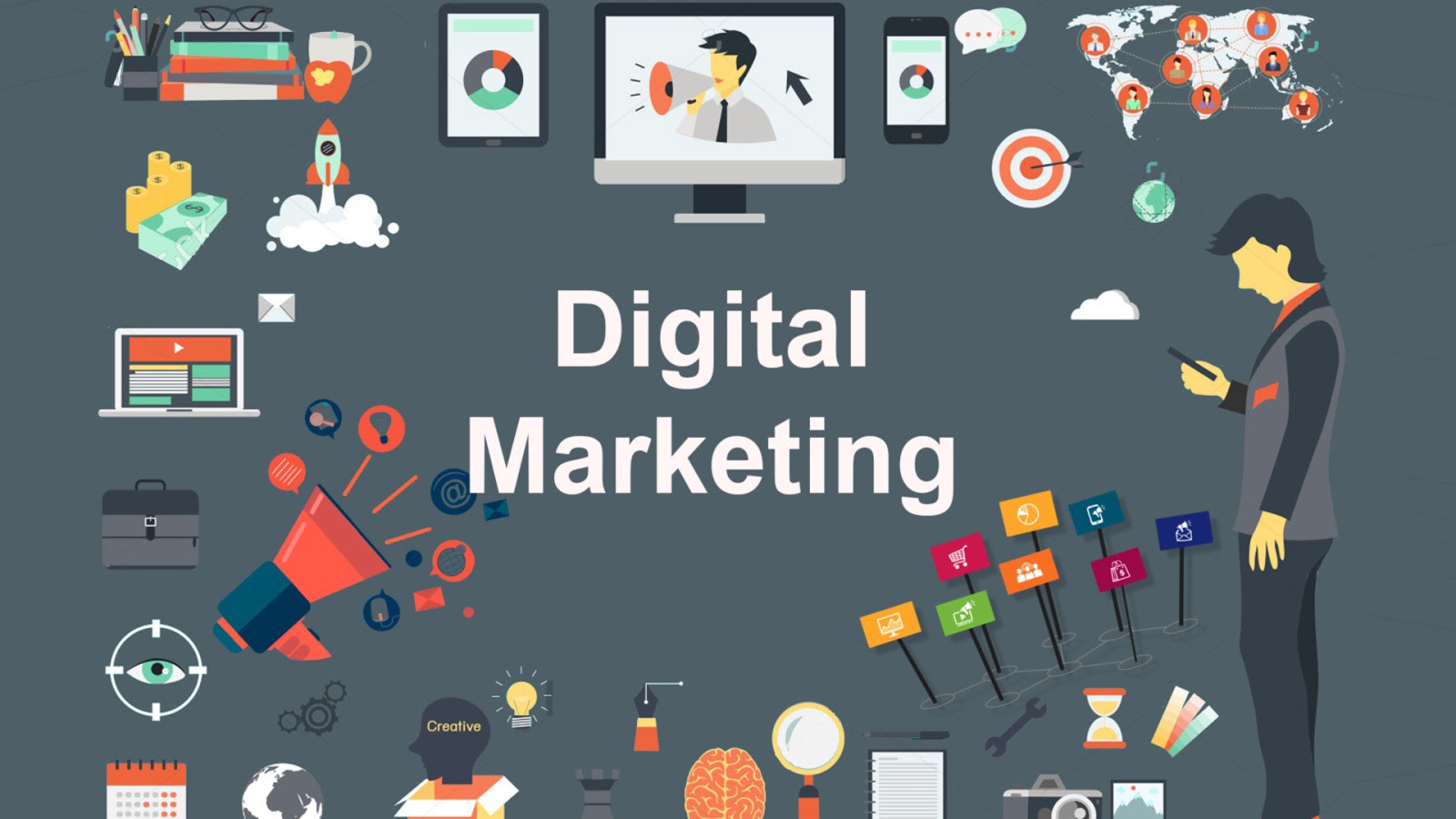Introducing Differences between Digital Marketing From Web Marketing
- 1 The difference between digital marketing and web marketing
- 1.1 Digital marketing is a measure that strongly connects with customers in the smartphone era.
- 1.2 Complete Guide On Mobile Marketing
- 2 Points to consider in digital marketing strategy planning
- 2.1 Organize existing website measures, SEO, web advertising, etc.
- 2.2 Content marketing design
- 2.3 CRM (Customer Relationship Management) and Email Marketing
- 3 Market conditions for platforms that support digital marketing
- 4 Future Of Digital Marketing
- 5 Changes in KPIs
“Digital marketing” is often abbreviated as “digitalma”, and it is not uncommon for specialized departments to be created. It can be seen that it has been widely recognized and permeated. Why is digital marketing attracting attention? I will explain the basic knowledge, including the differences from conventional web marketing.
The difference between digital marketing and web marketing
Digital marketing and web marketing tend to be regarded as similar because the technical centre is the same Internet, and the measures on the web are standard. So, are they just buzzwords representing the traditional notion that the IT industry should drive demand? Digital marketing is in demand in the telemarketed final expense leads generation industry.
The difference lies in how much they treat the world as marketing targets. As the name implies, web marketing focuses on websites and can be said to be marketing closed only to the world of websites.
On the other hand, digital marketing is not limited to websites; it utilizes all the data and touch points obtained digitally. The decisive difference from web marketing is that the range of the world handled is extremely wide.
In web marketing, we often consider how to enhance the content of companies’ websites to attract, guide, and encourage actions such as purchasing. This includes SEO measures, listing advertisements, access analysis, and subsequent website improvements. We will take measures centred on the Web and measure the effects using the information that can be obtained on the Web.
Digital marketing is a measure that strongly connects with customers in the smartphone era.
Today, digital contacts with customers, such as advertisements on websites, company websites, emails, and apps, are mainly diverse. Digital marketing comprehensively incorporates these points of contact. It includes data adjacent to your company’s website, such as web marketing, word-of-mouth sites and SNS, digital signage and digital point member information, and location information, such as where you accessed.
It also enables an approach through O2O (Online to Offline), where online and actual stores work together. Therefore, you can build a deeper relationship with each customer by sending the right message at the right time.
The rapid acceleration of this trend is none other than the spread of smart devices. The mainstream of a series of processes in which consumers get information, purchase services and products, ask for support, and send out their information is mainly performed using smart devices. Especially for the younger generation who use smartphones, it is often the case that information closer to oneself, such as SNS, than official information and information that one trusts is used as the first criterion, and the story does not progress according to the story drawn by the company. I have come.
Complete Guide On Mobile Marketing
This is by no means a pinch for marketers, and it’s also an opportunity for digital marketing to significantly strengthen customer connections over web marketing. This is your chance to win a solid fan base for your corporate brand and products. Linking users with terminal users is easy, which enables more accurate marketing.
However, on the flip side, connecting with customers may be more challenging than before if you can’t handle digital marketing.
Points to consider in digital marketing strategy planning
As mentioned earlier, creating a mechanism combining communication on all channels and measures closed on the website is necessary to promote digital marketing. The points to consider are as follows.
Organize existing website measures, SEO, web advertising, etc.
First, let’s identify the current web marketing measures. Then, consider whether your web marketing is paying off and what you should do to expand your efforts.
The following are some examples of points to consider.
- Does the website support responsiveness?
- Are you properly guiding inquiries and requesting materials on the website?
- Are you trying to increase the influx of websites via search through SEO measures?
- Are you selecting target people/companies and placing digital advertisements for those targets?
Successful digital marketing is expected to increase the number of website visits. If the existing web marketing is used correctly to deliver information, further effects can be expected. Please refer to another article for a detailed explanation of web marketing.
Content marketing design
Content marketing here is not limited to owned media on your site but also downloadable content such as emails, web advertisements, ebooks and white papers, and postings on social media (not only articles but also creative photos and videos). (This includes push notifications by smartphone apps, etc.)
The key here is how the customer sees the information. Video content may be preferred over long articles when collecting information on smartphones. If you’re a BtoB business, providing white papers and worksheets that you can download and use directly to create in-house materials might be helpful. If you want to spread information on social media at once, you may need to create a unique photo creative that is easy to share.
CRM (Customer Relationship Management) and Email Marketing
Email in digital marketing means you can use all channels, not just websites, to communicate with each customer. Therefore, it is also essential to consider a CRM (Customer Relationship Management) strategy that centrally manages the acquired customer information and implements cross-channel measures based on that data.
Email marketing is the most accessible CRM initiative to get started with. Many companies and brands already distribute email newsletters; in addition to regular simultaneous distribution, we optimize email information according to the status of website visits and make special offers. By guiding you, you can strengthen the relationship with the customer and create an experience that makes you feel that you know yourself.
You can download the ebook with details from the URL below for effective email marketing.
Market conditions for platforms that support digital marketing
The platform that played a central role in the era of web marketing was centred around web data. After analyzing access logs such as Adobe Analytics and Google Analytics, it evolved into Web Analytics around 2013. In addition to the mainstream access to conventional personal computers, analysis via smartphones and tablets has become required across devices.
From around 2015, you cannot only analyze in an integrated manner by adding EC (electronic commerce), membership system, smartphone application, etc., but also integrate from marketing strategy planning to implementation of measures, and digital marketing is a one-stop. There is a growing need for a platform that can help.
The analysis results derived from vast amounts of data called big data cover not only data on SNS and the Web but also the movement of people and things in the real world. Therefore, privacy and personal information protection are issues. Still, the Personal Information Protection Law was amended in 2015, and by processing personal information so that an individual cannot identify it, it can be used without the individual’s consent. (Of course, the current situation will not continue in the future due to growing interest in how to handle personal information, such as recent news related to personal information and the enforcement of GDPR in Europe. Also, it lacks a consumer perspective. Marketing activities can damage a company’s brand and credibility, so great care must be taken.)
By paying more attention to consumer behaviour and capturing it more accurately, product development and marketing strategies will genuinely begin to revolve around consumers. As many companies work on personalization for each consumer, expecting the effects of conventional, uniform methods such as mass email transmission will be difficult. Emaildition and personalization efforts usually take time and effort, and there is a problem of a shortage of human resources and, at the same time, a lack of timeliness. In addition, this will add to the growing number of touchpoints with consumers, adding to marketers’ worries.
Therefore, utilizing data management and marketing automation (MA) platforms is essential. Marketers in the future will be required to further contribute to branding improvement by allocating the time created by streamlining and automating the execution of measures to the strategic planning and creative areas that they should be working on.
According to the “DMP (Data Management Platform) Service Market / MA (Marketing Automation) Service Market Survey Results 2015” data published by Yano Research Institute, the market size of digital marketing services was 20.8 billion yen in 2014. It is expected to increase about 2.7 times to 55.9 billion yen in 2020. Digital marketing’s importance and necessity will increase, and its introduction is expected to progress.
Future Of Digital Marketing
Video marketing is booming these days. The popularity of how-to videos that can be seen in about one minute is increasing, and the fact that “PPAP” has become a worldwide hit has made us aware that it is a medium with explosive power. Facebook has come to be regarded as an advertising company in the form of SNS, but the video function is still being enhanced. In addition to telephone and email, communication via email and chat from smartphones has also begun.
In the future, the use of AI (artificial intelligence) in the marketing field is said to be the most noticeable. As AI technology centred on deep learning becomes more widespread, customer analysis and persona creation will become more automated and sophisticated, and it is expected that even the decision to execute or end a campaign will be made by a “cool” machine. Naturally, one-to-one marketing will be more profound.
Initially, people with AI may have an advantage. Still, when it is incorporated as a function of MA and can be handled by anyone, it will be differentiated from other companies and will continue to be competitive. It may not be easy. At that time, marketers’ ability to draw the vision they should aim for and put it into practice and how deeply they have been connected to customers by then may be questioned.
Roles and requirements of digital marketers
As we have introduced so far, by building relationships with customers on all channels through digital marketing measures, it will be possible to make efforts that contribute more to profits, and marketers are required. It will be like. Therefore, when implementing digital marketing measures, the roles and business contents are not far from what has been tackled, but the scope of thinking and responsibilities will change. Here are some possible points.
Changes in KPIs
By working on digital marketing, you can measure indicators you couldn’t measure before. In the case of existing web marketing, I think that SNS staff often follow the number of access to the website, the number of inquiries, the number of conversions such as data downloads, etc., as KPIs, and the number of followers and impressions. In digital marketing, it becomes possible to visualize and measure the entire process from the first point of contact to the purchase by integrating and centrally managing customer data.
Therefore, in addition to single-channel indicators, chasing a number closer to profit as a KPI may be an option. Specific examples include the pipeline (the number and amount of deals registered by sales as business negotiations) and the sales/contract amount (the number of deals). In other words, marketers need to consider measures closer to management’s perspective.
Marketo has an ebook that explains performance indicators and analysis methods in marketing activities. Please download and use it as a reference for the KPIs you set in-house.

















